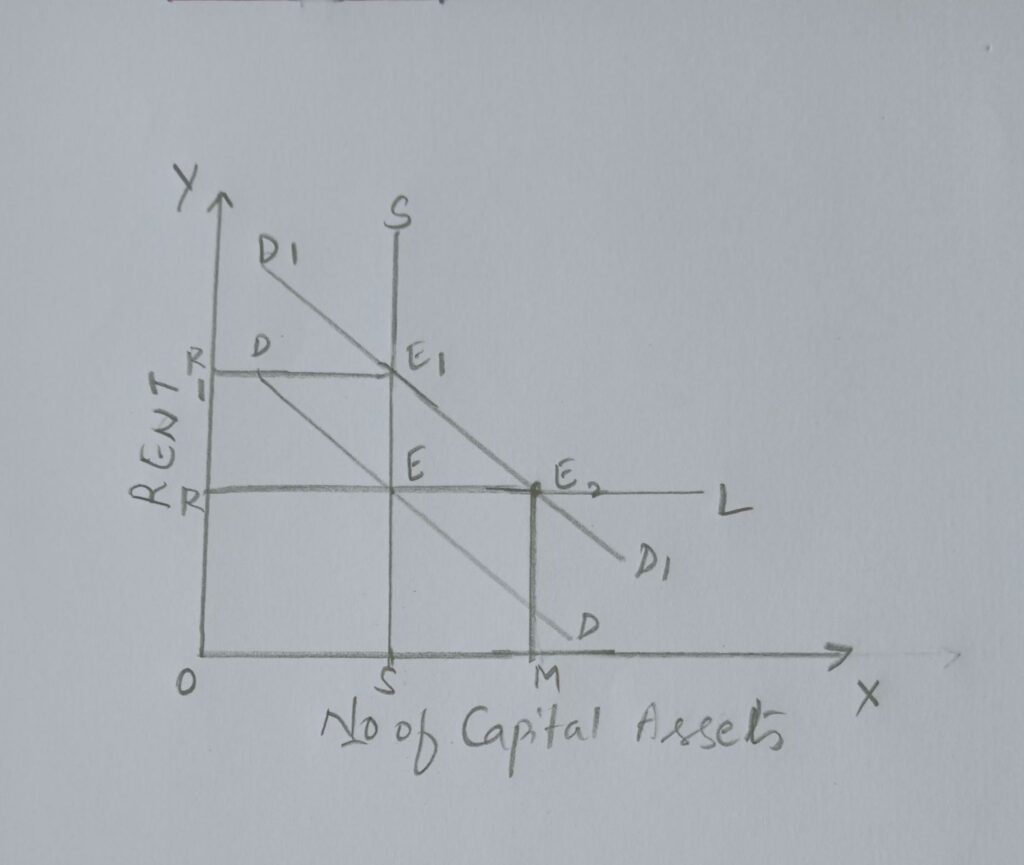Meaning:
The concept of quasi rent was first introduced by Marshall. He explained that besides land, other factors also get rent the only difference is that rent may accrue to land in the long run also whereas it accrues to others factor only in the short run.
Concept of Quasi-Rent:
Marshall explained that the supply of land is perfectly inelastic and when demand goes up it price also increases and this is called rent. The supply of man made goods and capital is also fixed in the short run. If the demand increases it leads to an increase in the price of such goods and they start getting some surplus over and above the price which they were already getting .this surplus is nothing but quasi rent. it is the economic rent that arises in the case of man made goods in the short run. In the short run, a firm must get that much price which may cover it AVC. If the price is more than AVC. it means that the minimum price it would likely to get thus the excess price over AVC is economic rent. This is explained with the help of a diagram.
Output is Measures on x axis and the cost and revenue on y axis AVC represent the average variable cost and MC the marginal cost in the short run. MR is the marginal revenue. Assuming it to be a competitive firm, the equilibrium is a point E in the short run. The firm must recover its AVC which is equal to FQ but equilibrium price is EQ and it exceeds AVC by EF amount thus EF is the quasi rent and is the difference between the price and AVC.
Marshall’s analysis of quasi-rent is embedded in his discussion of the short run and long run in the theory of production. In the short run, certain factors of production may be fixed and unable to be adjusted. During this period, if the demand for a product increases, the price and revenue of that product may rise, leading to what Marshall referred to as quasi-rent.
In the long run, all factors of production are considered variable, and the supply of factors can be adjusted to changes in demand. In this context, quasi-rent disappears as factors of production can be reallocated or expanded in response to changes in market conditions. In the long run there is adequate time to increase the production and supply of capital assets when demand for them rises. Consequently, the prices of these will come down to the original price level. The short run surplus thus disappears. in the long run total revenue equals total costs. Hence there will be no surplus. It is clear from the diagram.

Marshall’s treatment of quasi-rent may not be as explicit or formalized as in the works of other economists like David Ricardo, his ideas on short-run and long-run adjustments laid the foundation for understanding how returns to factors of production can be influenced by changes in demand and supply conditions over time.